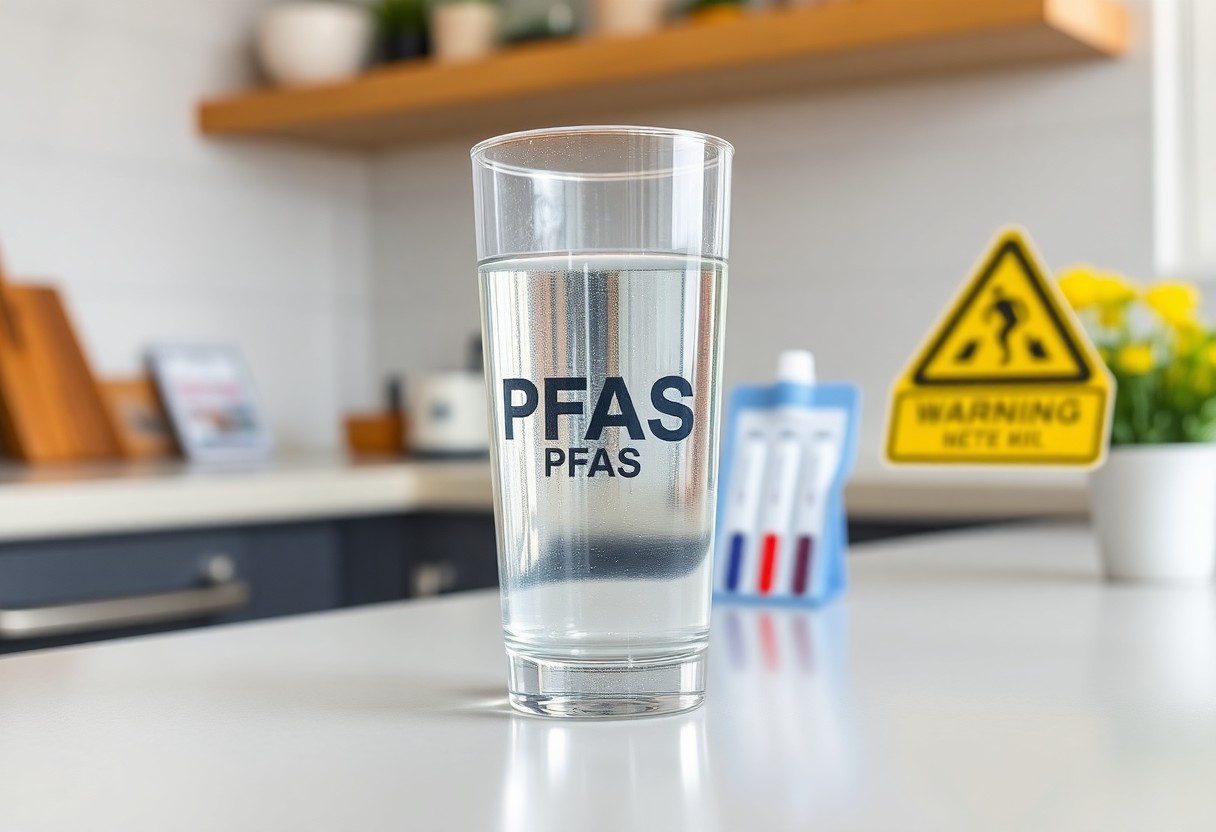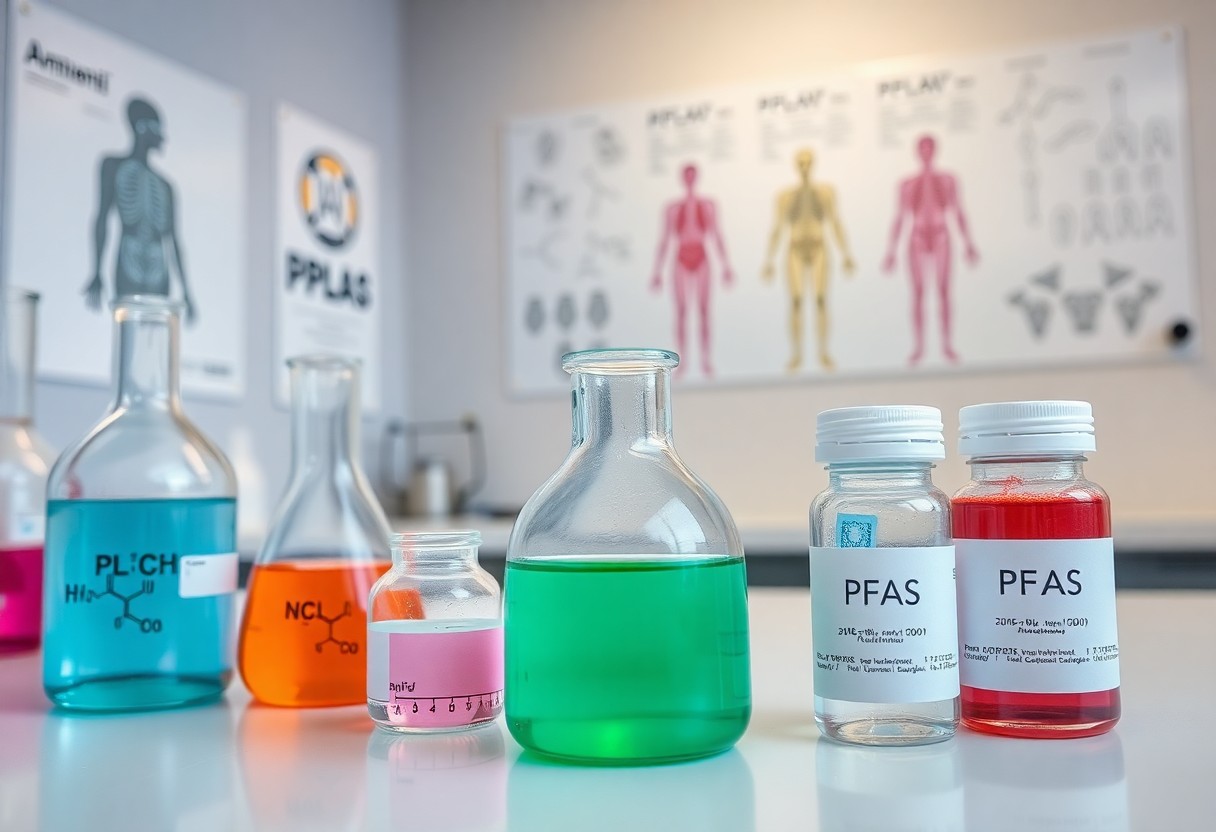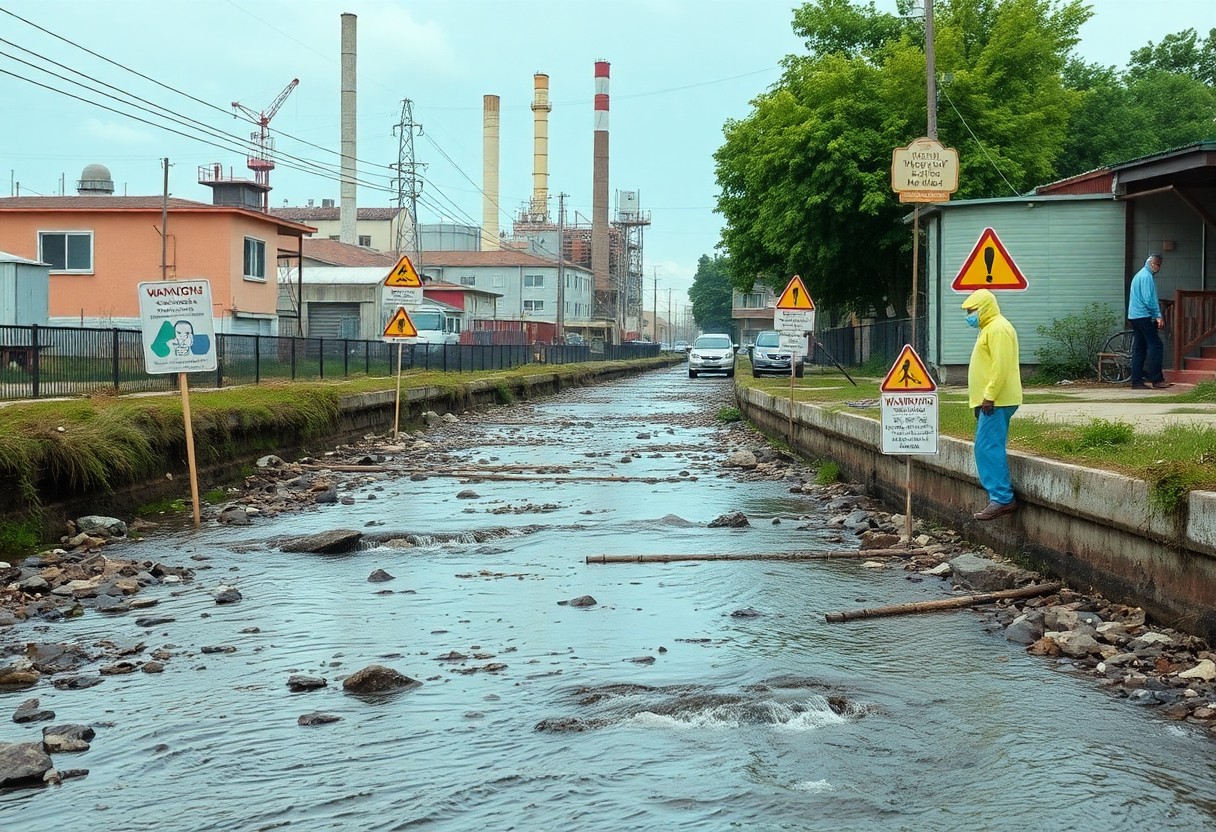Many people are unaware of the dangerous presence of PFAS (Per- and polyfluoroalkyl substances) in their environments, which can lead to serious health risks including cancer and hormonal disruption. These chemicals are commonly found in everyday products, such as non-stick cookware and stain-resistant fabrics, making them difficult to avoid. In this blog post, you will discover how PFAS may be affecting your health, the widespread sources of contamination, and what steps you can take to protect yourself and your family from these harmful substances.
Understanding PFAS
The truth about PFAS, or per- and polyfluoroalkyl substances, is far more alarming than many realize. These synthetic chemicals, widely used for their water- and grease-resistant properties, have permeated our environment and daily lives, posing serious health risks. Identifying PFAS and understanding their implications can empower you to make informed decisions about your safety and well-being.
What are PFAS?
PFAS are a group of over 4,700 man-made chemicals that have been utilized in various industries since the 1940s. Known for their persistent nature, they do not break down easily in the environment, leading to a concerning accumulation in water, soil, and even in human bodies. These compounds can disrupt hormonal systems and have been linked to numerous health concerns.
Sources of Contamination
Below are the common sources of PFAS contamination that you might encounter in your everyday life. These include industrial discharges, firefighting foams, non-stick cookware, stain-resistant fabrics, and even some food packaging. As these substances infiltrate water supplies and land, you can unknowingly be exposed to them.
Also, household items such as cleaning products, cosmetics, and some waterproof clothing may contain PFAS, leading to indirect exposure. It’s important to be diligent in assessing local advisories regarding drinking water safety, as PFAS have been detected in many municipal water supplies. By understanding these sources, you can take practical steps to minimize your exposure to these harmful chemicals.
Health Risks Associated with PFAS
One of the most alarming aspects of PFAS contamination is the potential health risks you may face. These synthetic chemicals have been linked to a variety of serious health issues, including hormonal imbalances, weakened immune responses, and increased cancer risks. As these substances accumulate in your body over time, they may disrupt vital bodily functions and undermine your overall well-being.
Short-term Effects
Above all, short-term exposure to PFAS can lead to immediate health problems such as skin irritations, fatigue, and gastrointestinal issues. You might also experience respiratory difficulties if you’re exposed to contaminated air or dust. These effects can vary in intensity based on the level and duration of your exposure.
Long-term Health Consequences
Longterm exposure to PFAS has been associated with significantly increased health risks, including various types of cancer, liver damage, and reproductive issues. These compounds may also impact your endocrine system, potentially leading to developmental problems in children. As PFAS persist in your body, the cumulative effects can manifest in serious, long-lasting health challenges.
Also, it’s vital to be aware that prolonged PFAS exposure can impact your cholesterol levels, leading to potential cardiovascular complications. Studies suggest that these chemicals may create a heightened risk of kidney and testicular cancer, which is particularly concerning for your long-term health. Furthermore, PFAS can interfere with your immune response, making it harder for you to fight off infections and recover from illnesses. The more you understand these risks, the better equipped you’ll be to protect your health.

How PFAS Contamination Occurs
Some sources of PFAS contamination include industrial discharges, the use of firefighting foam, and waste disposal sites. These substances are commonly found in non-stick cookware, food packaging, and water-resistant materials. Once released into the environment, PFAS can infiltrate soil and water sources, impacting local communities and ecosystems.
Pathways of Exposure
Below are the main pathways through which you may be exposed to PFAS: drinking contaminated water, consuming contaminated food, inhaling affected air, and using products treated with these chemicals. Awareness of these routes is imperative for assessing your risk and taking appropriate precautionary steps.
Environmental Persistence
The long-lasting nature of PFAS compounds in the environment raises significant concerns for your health. These substances do not easily break down and can remain in soil and water for years or even decades, leading to bioaccumulation in wildlife and food chains.
It is important to understand that PFAS can persist indefinitely in the environment, making them a lasting threat to water quality and ecosystem health. Their tendency to bioaccumulate means that animals absorb these harmful substances from their surroundings, potentially leading to high concentrations up the food chain. Consequently, this enduring presence poses a significant risk to your health and the health of future generations. Being informed about the sources and dangers of PFAS is critical for your safety and well-being.
Identifying PFAS in Your Environment
Now that you’re aware of PFAS and their effects, understanding how to identify them in your surroundings is vital. These harmful compounds can be found in various sources like drinking water, soil, and even household products. Regular assessments can help you pinpoint potential contamination, enabling you to take necessary precautions to protect your health and that of your family.
Testing Methods
Behind the scenes, various testing methods can help detect PFAS levels in your environment. Water testing kits and laboratory analyses can reveal the presence of these substances. If you suspect contamination, contacting professionals to conduct in-depth testing can provide you with the information you need to make safe choices.
Areas of Concern
Against the backdrop of PFAS contamination, certain areas demand your attention. Locations near military bases, landfills, and wastewater treatment plants are often hotspots for PFAS due to their historical use in firefighting foams and industrial processes. Your local water supply may also be at risk, especially if you rely on groundwater.
It is necessary to stay informed about specific locations that may predispose you to PFAS contamination. Areas like military installations, landfills, and wastewater treatment facilities often show higher levels of PFAS due to the chemicals used in firefighting and manufacturing. Moreover, if you’re on a private well, it’s wise to conduct regular testing, as groundwater can be particularly susceptible to contamination from surrounding industrial activities. Being proactive in these areas will significantly enhance your ability to safeguard your family’s health.
Mitigation Strategies for Individuals
Despite the alarming presence of PFAS in various environments, you can take effective steps to mitigate your risk. Adopting certain strategies will help reduce your exposure and protect your health. Make informed choices about the products you use, prioritize alternative options, and stay informed on local water quality reports to better understand how PFAS may affect your area.
Reducing Exposure
After becoming aware of PFAS risks, it’s vital to minimize your exposure in daily life. You should consider using stainless steel or glass containers instead of non-stick cookware and opt for organic food items whenever possible to reduce your risk of contamination through food and packaging.
Treatment Options for Water
Behind the concerns of PFAS in your drinking water lies the need for effective water treatment solutions. You may want to explore options such as activated carbon filters, reverse osmosis systems, and distillation methods, which can significantly reduce PFAS levels in your water supply.
But it’s important to note that not all filtration systems are equally effective against PFAS. Make sure to choose filters certified to remove PFAS, as some products merely address other contaminants. Investing in the right water treatment system can greatly enhance your water quality and protect your health from the potential dangers of PFAS exposure.
Legislation and Regulatory Actions
Not all legislation regarding PFAS contamination is equally effective. While some states are taking decisive action to regulate PFAS levels in drinking water, others lag behind, creating a patchwork of laws that may not adequately protect your health. You must stay informed about local regulations and advocate for stronger measures to ensure your community is safe from these harmful substances.
Current Regulations
Beside federal guidelines setting limits for certain PFAS chemicals, individual states have begun implementing stricter regulations to address contamination. You might find that the standards in your area are more stringent than federal levels, offering better protection against these dangerous substances in your water supply.
Future Developments
Above all, ongoing research is expected to drive future regulatory developments regarding PFAS. Emerging science may lead to new guidelines and more stringent exposure limits, which can significantly affect your environment and health. Staying updated on these changes is important for your safety.
Future legislative efforts will focus on the identification and regulation of additional PFAS compounds, as researchers uncover their potential dangers. You should keep an eye on upcoming regulations that may restrict the use of PFAS in consumer products, groundwater, and food packaging. These developments aim to reduce exposure and mitigate health risks, thus creating a safer environment for you and your loved ones. Lawmakers will likely push for higher accountability among manufacturers and enforce tighter regulations on PFAS discharges into the environment.
To wrap up
With this in mind, understanding the implications of PFAS contamination is vital for your health and safety. As these chemicals persist in the environment and accumulate in your body, being informed about their sources and effects can empower you to take proactive steps. Regularly check water quality reports and consider filtration systems if necessary. Staying vigilant about products you use can help minimize your exposure to these harmful substances. Your awareness is key to protecting yourself and your loved ones from the risks associated with PFAS contamination.



















